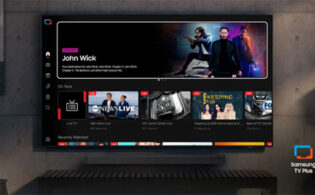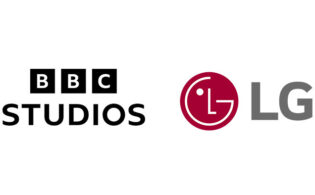The second annual FAST Festival opened with BBC Studios’ Beth Anderson, ITV Studios’ Graham Haigh and All3Media International’s Amanda Stevens discussing the channel curation opportunities available to distributors with significant libraries.
The Scaling Opportunities superpanel, which can be viewed here, was moderated by World Screen’s Anna Carugati and featured Anderson, senior VP and general manager of FAST channels and VOD sales at BBC Studios; Haigh, executive VP of global digital partnerships at ITV Studios; and Stevens, VP of global digital partnerships at All3Media International.
On the decision to move into FAST, Haigh said: “It’s the opportunity for incremental revenue. How do we take our amazing catalog of 90,000-plus hours of content and find new audiences?”
Anderson, noting that BBC Studios has now assembled a slate of 14 channels across single IP and multi-genre, quipped: “Money is always a good reason to get into anything! We go where our audiences are. We see the FAST business as something to iterate within and incubate our brands. It’s an awesome opportunity to curate content discovery.”
“AVOD and FAST is an opportunity to monetize content for producers throughout the life cycle of that content,” Stevens added. “We work with our international sales team; AVOD and FAST is never going to cut across those traditional paid-for deals, but it does offer incremental revenue.”
All3Media International similarly has a mix of single IP and multi-genre services, including one for Midsomer Murders that Stevens referred to as a “game-changer…. That is, by far, our biggest FAST channel. It’s a dream FAST property because it’s long-running, so you’ve got hundreds of hours and the ability to constantly refresh. It has a loyal fan base. That’s great in terms of viewership, but also for the ability to do audience participation and stunting.”
Stevens addressed the increasingly crowded space and noted, “Unless you have a brand like Midsomer Murders, which markets itself, how are you going to get recognition? You probably do need a YouTube presence. You maybe need an AVOD app or an SVOD app.”
Anderson added, “FAST is not cannibalistic to other business models, but it’s also not a stand-alone business. It’s part of an overall media flywheel. Brands are served by having a multi-tenet distribution strategy and content available in multiple places.
“FAST is described as lean-back as an experience,” she continued. “It’s not lean-back. The discovery of the channel is lean-back, but when people are watching, they’re watching just as vividly as if they’re watching it in an SVOD environment. That engagement level and the amount of minutes watched is a key metric for us all and is led by some of the IP developed originally for linear playout.”
Haigh agreed, adding, “There is still a challenge around your higher-end, serialized scripted shows. It’s quite hard to make that work in the FAST space because it’s perhaps not quite sophisticated enough in terms of the scheduling and the visibility of the schedule to the consumer. It works where that content might exist in a single-brand form, which removes some of those challenges. It’s very hard to build a brand in the FAST world. It just takes time and patience, and often you may not have that time or patience.”
“And you don’t have a linear TV budget to market and break a show,” Stevens added. “You need an existing brand.”
Being multiplatform is key, Haigh noted: “If you take something like Hell’s Kitchen, it is about that 360 model. FAST is not going to be the be-all, end-all. We’ve got a great YouTube channel; how does that feed into the FAST world? We’ve got some amazing Hell’s Kitchen-branded pots and pans; how do you promote those in your inventory in FAST, AVOD and YouTube? How does that work with our producers selling that format around the world? And how do we use that information to make the format bigger in terms of scale, scope and number of regions?”
FAST and AVOD is generally much later in a windowing sequence, but different approaches are being used. Anderson referenced experimenting with “hot from the U.K.” programming. “Sometimes, it is the premier destination for some of our food and home programming and kids’ shows. On August 8, there will be a global premiere of The Mallorca Files season three. Amazon has taken over the global licensing opportunity as predominantly an AVOD-led piece of IP. We’ve done this in the past with Roku and We Are Not Alone. We see these environments as areas where we can have a rich opportunity for audiences to engage with the show, especially with a platform that engages with both FAST and AVOD. There is an opportunity for a dual play that creates a really interesting first-window opportunity for some IP.”
Anderson continued, “It’s all first window to someone. The specificity that we can have and the personalization will create lots of opportunities to introduce classic and new shows to a broader audience. And now we’re moving from a cable bundle environment to an internet-enabled environment, we have massively increased the number of eyeballs. The FAST market in the U.S. is now teetering around 111 million monthly active [users]. That is a huge reach opportunity and as valid for exclusive, first-window opportunities as any other medium in the market.”
ITV Studios currently operates 16 FAST channels globally with aims to near 20 by year-end. “The windowing is ultimately going to be different by territory,” Haigh said. “In the U.K., for example, with Hell’s Kitchen, we’re flowing what is essentially a second window into that channel. In Canada, we’re about to launch a channel with some premium programming in terms of the windowing. But predominantly, it is still fueled by the library and curating that library. We need to balance this business with our licensing business and ensure all boats rise. We need to consider the ultimate right home for a piece of content. That might be on a FAST channel in the future, accompanied by AVOD. That will differ by the individual piece of content and market in question.”
The discussion then moved to the analytics issue and how distributors are coping with not getting enough.
“It varies by platform,” Haigh said. “It’s not transparent; it’s very insular. We get data for our own channels and very little context around that. I won’t say it’s enough, but it’s sufficient for scheduling a channel, but you’re doing it with your arm tied behind your back. If we can’t effectively schedule a channel based on the most data we can access and have that transparency across not just our channels but all of the universe, then nobody wins. If we could generate and schedule a more effective channel that drives more viewing, that would benefit us and our platform partners.”
Stevens agreed, noting, “There is a lack of consistency across all platforms about what’s being reported and the cadence of how often you get that reporting. We are constantly tracking highest- and lowest-rating shows on any given channel, the strongest dayparts if you want to launch new content and performance over time. But, of course, it could always be better.”
Anderson added, “In the industry’s defense, the cake isn’t baked yet. FAST goes beyond an EPG. It’s not necessarily the only way to engage with a linear feed. As a result, there’s just a lot of technical development going on in this business. It makes sense that there isn’t a consensus on the metrics provided. Everyone is operating while also building. As an industry, we need to identify some key performance indicators. Revenue is paramount, but time spent is also the most valuable metric. In the U.S., there are over 1,900 FAST channels live today. It’s not necessarily about chasing the highest number of views on a specific channel at a specific moment. [It’s about] consistency, sustainability, making sure that we’re carrying through the right channel identity that can appeal to an audience on a loyal, long-term basis. That creates a much richer channel experience and provides more opportunity to introduce new IP to audiences.”
On their FAST, AVOD and social media strategies in the year ahead, Haigh stated: “We want to get more content and more genres out in the market, but we don’t want to flood ourselves with 40, 50 different channels. We’re launching new channel brands, but we’re doing it in a manner that creates a portfolio of things that can be consistent, and we can use the consistency to drive growth. So, we’ll have a consistent brand in that social space, in the FAST space, maybe in the metaverse and the physical product world.”
Specifically in FAST, Haigh explained that a key priority will be fine-tuning the marketing of its channels. “Making it a better consumer experience is important as the space evolves. That helps to drive stickiness and viewing. It’s about working with platform partners primarily to think about stunting in a bit more detail and how we secure platform promotion because, ultimately, that’s your best bet to drive viewing.”
For All3Media International, marketing existing channels is also a priority, Stevens said. “We’re facing a time when viewers will be watching a lot of news and current affairs, which is not what we do in the FAST space, and sports. The platforms are going to promote that type of content. How can we stunt and market our channels to make them stand out?”
New services are also on the horizon, Stevens added, “including a mixed-IP drama channel. We haven’t cracked how you schedule something with a narrative story arc. We’re also looking at consolidating slightly because there are channels on platforms that don’t do as well as we’d like them to do.”
For Anderson, the months ahead will be spent “listening, learning and launching. We’ve got so many territories around the world interested in exploring this. Not all of our channels make sense internationally in every market, and we like to be targeted in our approach. This business is not for the fainthearted. We’re building our VOD catalog to support FAST and leaning into how linear can help support some of our owned-and-operated businesses.”






